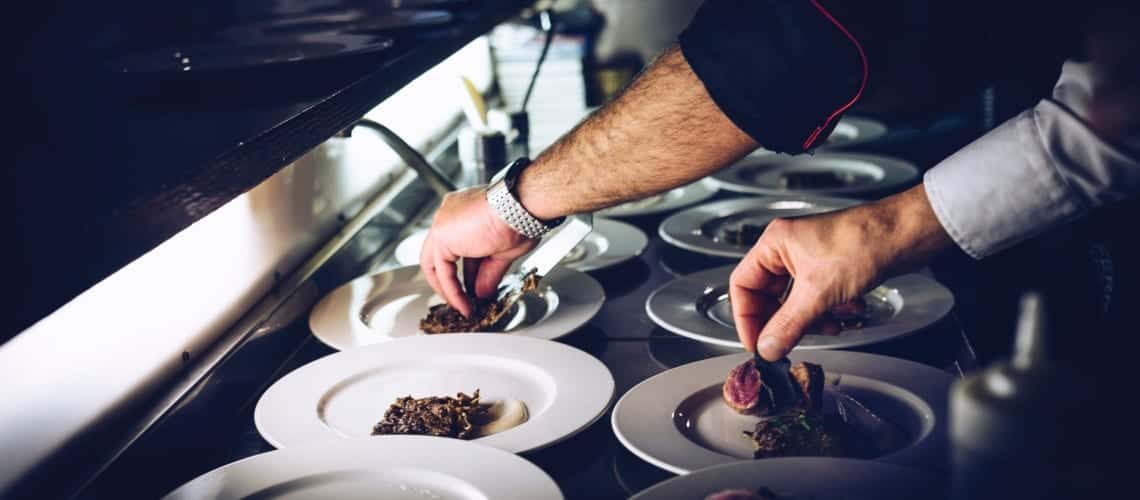There are two pressing issues that are extremly important for restaurateurs. Restaurants have two important responsibilities. One is to ensure that foodborne illnesses are not spread to their customers and their food. The foodservice industry is constantly in struggle to prevent costly (and often wasteful) product losses. Time-temperature abuse is the most common reason for both of these issues. Time and temperature are the main causes of food safety and product loss problems in restaurants.
Restaurants may lose power after hours, and their cooling and freezer units can rise beyond the “safe zone”, putting food at risk. Equipment can sometimes fail. Sometimes equipment malfunctions can be caused by a team member leaving the cooling drawer or walk-in cooler door open. These scenarios could lead to temperatures rising into the “danger zone,” which is where bacteria rapidly multiplies. Your staff must then make a tough decision: Do they throw away the product, lose substantial money, disrupt service or hope for the best and serve the product to their guests and hope that no one gets sick?
Foodborne illness outbreaks are often very serious. Restaurants can be affected by a food safety incident that could cause severe illness or even death. Restaurants can lose customers’ trust, suffer from negative online comments, be sued, and even go bankrupt. A simple error in the kitchen can cause foodborne illness that can be fatal.
Food waste is a major problem in the nation’s restaurants. Every day, a lot of food is thrown away. A recent ChefHero report found that a single restaurant can produce between 25,000 to 75,000 pounds of food scraps per year. Restaurants’ profitability can be significantly boosted by reducing food waste, which is approximately one-third of their overall expenses.
Continuous temperature monitoring sensors are now an effective way to prevent food safety issues and food waste. Restaurants must embrace automated temperature sensors in order to prevent costly product loss and protect their brands in an industry that is experiencing increasing competition and tight margins.
Continuous temperature monitoring sensors that are the most recent in technology are reliable, more affordable, easier to use, and more accessible than ever. But, only 5% of restaurants use them. These digital sensors are capable of solving two of the most pressing problems for restaurateurs in a precise, reliable, and powerful manner.
Continuous equipment temperature sensors can be installed in restaurants to provide many benefits. This technology is:
- Food safety –Continuous monitoring sensors monitor equipment and alert staff when there are any problems. Restaurant staff will be notified if temperatures rise above a set level. This allows them to correct the problem immediately and prevents dangerous bacteria from growing in the food.
- Protect your product from loss–Digital sensors can be used to reduce product loss. They are affordable and effective. The latest technologies monitor all equipment, including walk-in coolers and cooling drawers. They also provide proactive alerts in case of a system breach. Staff at restaurants are immediately notified of temperature fluctuations, equipment failures and power loss. This can reduce product loss and increase profitability.
- Operate from an elevated position.No matter how skilled a restaurant staff may be, human mistakes can still happen. Restaurant kitchens. Employees may forget to check the temperature in walk-in refrigerators or reach-in drawers. They could also leave the door open to cause food temperatures to rise to dangerous levels. Sensors can be used to improve operational checks, reduce labor-intensive tasks and prevent human error.
- Staff should be alerted to equipment problems and minimize downtime.Equipment malfunctions can have a negative impact on the guest experience. A malfunctioning walk in cooler, for example, can cause delays in service and limit the number of menu items that are available per shift. A walk-in cooler that is not in compliance with the company’s guidelines can cause food to be compromised (dangerous), produce large amounts of food waste (expensive), or lead to food shortages on the next shift (inconvenient). Automated temperature sensors are able to detect and alert operators immediately to any of these problems. Restaurants can thus avoid long downtime, product loss and food safety risks, as well as staff stress and other negative consequences.
Newer sensor models offer great benefits. These models offer the following:
- Affordable.The newest models can be up to 80 per cent cheaper than the previous models, which makes them more affordable for restaurants with tight budgets. The equipment will also help to prevent expensive issues such as product loss and food safety breaches, so the ROI is high.
- AccessibleSensors are becoming more mainstream and easily accessible in a wide range of industries including hospitality, healthcare, and food service. Restaurants can now subscribe to Sensors as a service, which means there are no upfront costs for hardware purchases. Restaurants can make monthly subscription payments that are affordable, just like they would for laundry, payroll or other monthly expenses.
- InnovativeModern technology offers better signals than older options and is more able to penetrate the back of the house (which was a problem with older models).
- ScalableSensors can be deployed in one restaurant or across a chain. It’s easy to scale up the system as your business grows. The latest systems can be easily integrated to provide a seamless and cohesive experience across all units within a restaurant brand.
- Reliable.The sensors of today provide real-time data and alerts that can be accessed from any device, at any time. It makes it easy for chefs, GMs, and owners to travel between units and sometimes between cities and need to access information electronically.
- ConfigurableOperators can set temperature and time thresholds to receive notifications when temperatures fluctuate by a specified number of degrees. This system alerts them to the smallest temperature changes so they can take action before food becomes dangerous.
- Smart.Modern models are extremely intuitive and have “Preventative Maintenance” alerts for temperature fluctuations that indicate an imminent equipment failure.
- It is easy to install.Modern temperature sensors are easy to install in areas that require equipment monitoring, such as low boy coolers, walk-ins, freezers, or walk-ins. Modern sensors are available with DIY kits that allow you to install the equipment yourself.
Fast-growing, profitable food service companies are using new technology, including digital sensors, to streamline and improve their operations, reduce human error and improve operational efficiency. This allows them to eliminate food waste and minimize food safety violations. It is also important to have a large-picture view of an enterprise. This allows restaurants to make well-informed, data-driven operational decisions.
For a free trial of Thermonitor Wireless Temperature Monitoring – contact us here


